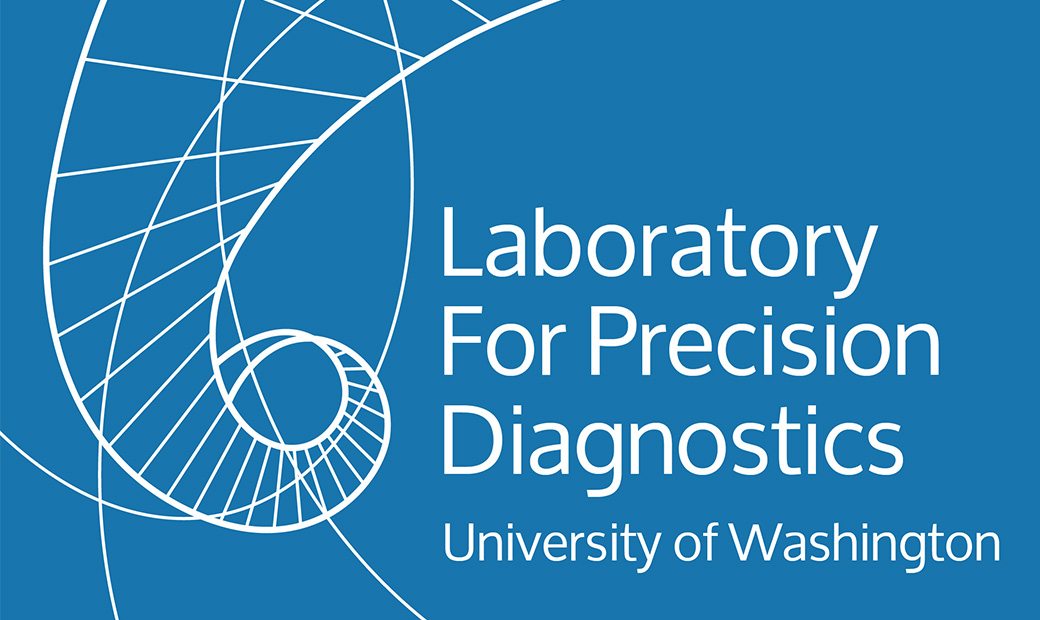EXOME SEQUENCING
TEST METHODS:
Background
Exome sequencing targets protein coding genes and identifies differences with a human reference sequence. The variants detected are analyzed to determine if they could contribute to the individual’s clinical features. Additionally, if requested by the patient, the laboratory will report genetic variants unrelated to the primary indication for testing that are considered potentially medically actionable (termed “secondary findings”).
Sequencing Methodology
Genomic DNA was extracted from the submitted specimen(s) unless previously performed. A library of DNA fragments was constructed and enriched for protein and RNA coding portions of the human genome using the Exome v1.0 (Integrated DNA Technologies) capture system. Paired-end sequencing of the enriched library was performed using rapid run v2.0 (Illumina) chemistry on a HiSeq 2500 (Illumina) sequencer according to the manufacturer’s recommended protocol. Sequences were aligned to the human genome reference (hg19) using the Burrows-Wheeler Aligner (BWA) and variants identified with the Genome Analysis Took Kit (GATK). SnpEff was used to annotate variants found within these genes. The mean depth of coverage was assessed for protein coding RefSeq exons. The values below represent metrics from this individual’s exome sequencing:
Coverage statistics (PD-20-00062): Mean read depth of 103X. 99.68% of the exome was covered at ≥20X.
Analysis Approach
Variants are prioritized for manual review based on a combination of:
- Variant quality
- Frequency in large population databases (Genome Aggregation Database, gnomad.broadinstitute.org)
- Presence in clinical databases, such as the Human Gene Mutation Database (HGMD, hgmd.cf.ac.uk) and ClinVar (ncbi.nlm.nih.gov/clinvar)
- Protein impact
- Inheritance
- Phenotype association
- Patient preference for actionable secondary findings based on the ACMG SF v2.0 gene list
Please contact the laboratory for additional details on the variant prioritization process.
Variant Assessment and Reporting
Variants are evaluated and classified in the context of patient phenotype, family history, and inheritance pattern based on guidelines published by the American College of Medical Genetics and Genomics (ACMG) and the Association for Molecular Pathology (Richards et al., 2014). All variants are reported according to HGVS nomenclature (http://varnomen.hgvs.org/). Variants are interpreted to identify those suspected to cause or contribute to this patient’s clinical indication for testing. Medically actionable secondary findings are reported for the American College of Medical Genetics and Genomics (ACMG) SF v2.0 gene list (Kalia et al., 2017). The proband or his/her/their guardian must opt in for secondary findings analysis. Of note, genetic vVariants associated with carrier status (unrelated to the primary indication for testing), drug metabolism (pharmacogenomic), and/or genetic risk factors are not reviewed or reported by this test.
LIMITATIONS OF METHODOLOGY:
This report is limited to variants associated with this individual’s clinical features or, if requested, in a medically actionable gene recommended by the American College of Medical Genetics and Genomics (ACMG SF v2.0) genes. Variants are evaluated and reported for this individual only. Variants for family members included in this analysis are not independently evaluated or reported. Interpretation of next generation sequencing data relies on accurate, up-to-date, and complete clinical and family history as well as the scientific information available associating variants and genes to disease conditions in humans. Please note that iInterpretation of variants may evolve over time if the clinical or family history of the patient changes or as with new information about the clinical or family history, disease phenotype, and the associated genes, or and variants is discovered. Negative results do not exclude the possibility of a genetic cause for clinical symptoms. A provider can request reanalysis of the exome data on an annual basis. Please note that automatic reanalysis of this data is not otherwise performed. Please contact the laboratory for more information and cost at the time reanalysis is requested.
This exome sequencing assay is designed and validated to detect single nucleotide variants as well as small insertions and deletions. OtherSome types of variation are not reliably detected by this assay, including copy number changes, other structural rearrangements, DNA methylation, mitochondrial variation, variants occurring in regions containing paralogous genes or pseudogenes or with low coverage, mosaic variants, andor nucleotide repeat expansions/contractions. This assay is not designed to detect somatic variants. Variants may also be in regions of the exome that are not adequately captured or sequenced, and therefore not detected. While this assay has the ability to detect variants with apparently de novo inheritance when both parents are included for testing, germline mosaicism of either parent cannot be excluded.
